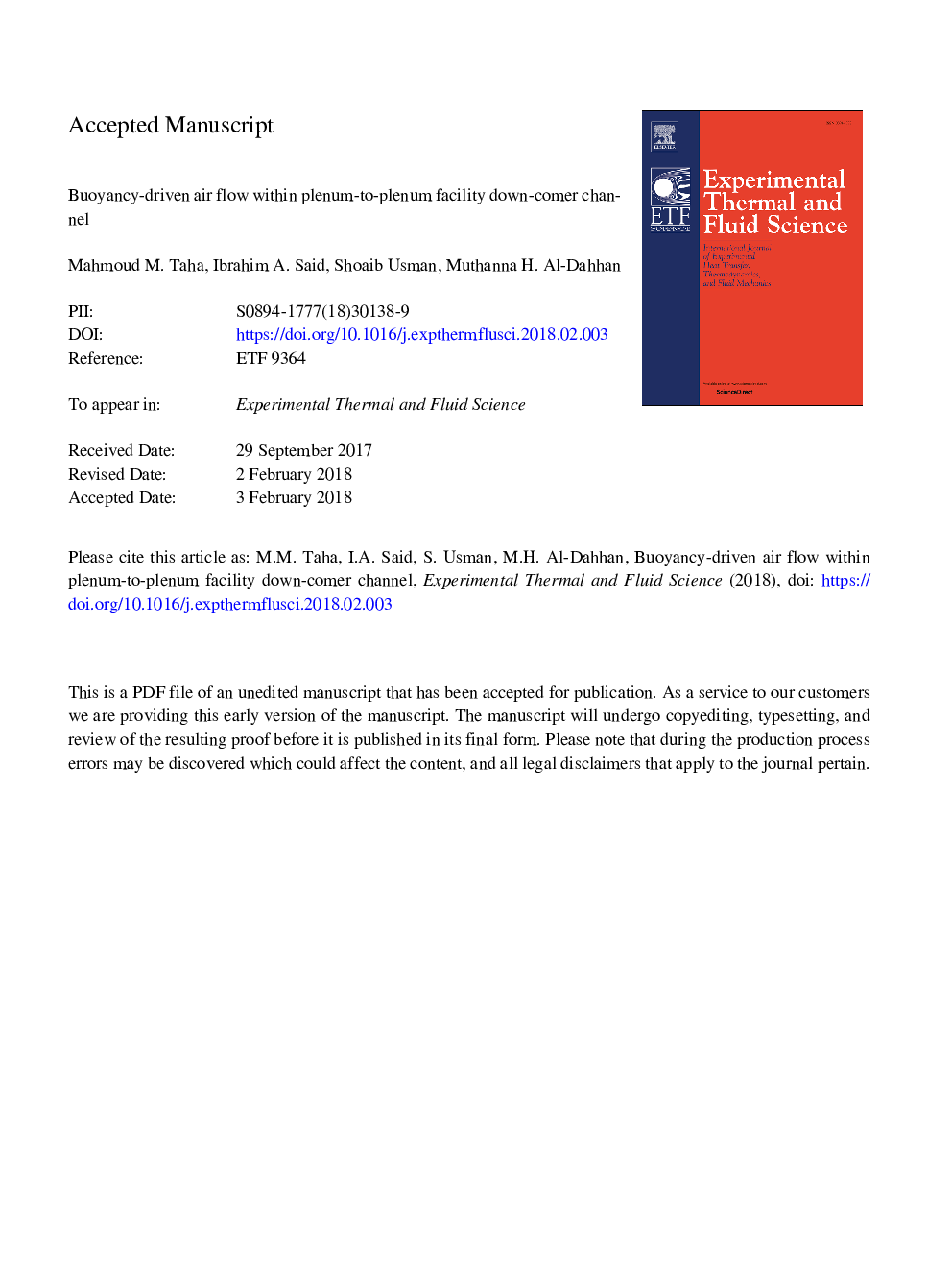| کد مقاله | کد نشریه | سال انتشار | مقاله انگلیسی | نسخه تمام متن |
|---|---|---|---|---|
| 7051760 | 1457382 | 2018 | 26 صفحه PDF | دانلود رایگان |
عنوان انگلیسی مقاله ISI
Buoyancy-driven air flow within plenum-to-plenum facility down-comer channel
ترجمه فارسی عنوان
جریان هوای رانده شده در کانال ورودی کانال پرتابل تا پانل محدوده
دانلود مقاله + سفارش ترجمه
دانلود مقاله ISI انگلیسی
رایگان برای ایرانیان
کلمات کلیدی
موضوعات مرتبط
مهندسی و علوم پایه
مهندسی شیمی
جریان سیال و فرایندهای انتقال
چکیده انگلیسی
Reliable measurements of thermal and velocity fields were experimentally investigated under different natural circulation intensities in a dual channel facility designed and developed with a representative geometry of prismatic modular reactor core. Experiments were conducted under steady state conditions to obtain statistically stationary time series signals of temperature and velocity. Insignificant radial temperature variation was observed along the down-comer channel implying that the majority of supplied heat is removed through the upper plenum. Velocity results obtained emphasize the delicate nature of natural circulation phenomena in terms of flow destabilization, and recirculation penetration length. Observed air velocity distribution reveals that downward velocity is proportional to the extent of cooling applied to the setup. The calculated values of the dimensionless group Froude number (Fr) in the range of 2 to 10 indicate that air is dominated by momentum and is exiting the channel as a jet. Quantification of turbulent intensities implies that flow destabilization is noticeable along the down-comer channel particularly for the case of high cooling intensity. For 5 °C cooling water temperature, turbulent intensity (vrms/v) peaks at the mid-channel (z/Lâ¯=â¯0.5) reaching a value of 0.5. This value of turbulent intensity is much higher than the inlet (z/Lâ¯=â¯0.96) and outlet (z/Lâ¯=â¯0.04) turbulent intensities of 0.2 and 0.06 respectively. This destabilization is because of the flow reversal and heat conduction effects through stainless steel flanges connecting both channels. Current results provide detailed velocity and temperature variation which can be useful for validating computational fluid dynamics codes.
ناشر
Database: Elsevier - ScienceDirect (ساینس دایرکت)
Journal: Experimental Thermal and Fluid Science - Volume 94, June 2018, Pages 205-214
Journal: Experimental Thermal and Fluid Science - Volume 94, June 2018, Pages 205-214
نویسندگان
Mahmoud M. Taha, Ibrahim A. Said, Shoaib Usman, Muthanna H. Al-Dahhan,
